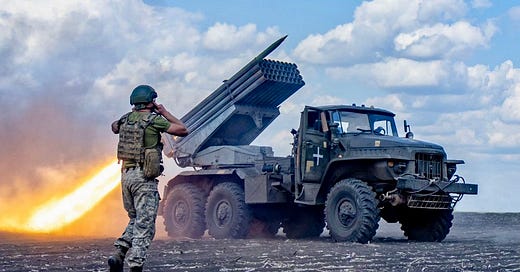The Kursk Campaign & Strategic Adaptation
A special initial assessment on how Ukraine learned the strategic lessons of the failed 2023 counteroffensive and adapted for the 2024 Kursk Campaign
Throughout the brutal war spawned by Russia’s large-scale invasion of Ukraine in February 2022, adaptation has been one of the critical national and battlefield functions of both the Ukrainians and the Russians. This is a process that has pulses and pauses, and which can be distributed unevenly throughout combat units and the bureaucratic institutions of state.
Nonetheless, the capacity to learn and adapt is crucial to generating advantage in wartime. Given the pace of contemporary military operations, when advantage is generated, it can be quite transitory or rapidly overtaken by enemy counter adaption. Therefore, learning and adaptation must be an ongoing endeavour at multiple levels, from squads on the frontline to civilian and military national security planners working for national leaders. One of the most important levels of learning in war is that which takes place at the strategic level.
Strategic adaptation is the process of learning and adaptation that takes place at the strategic or nation level. It occurs in both peace and war, although war does tend to provide better incentives for thinking about better ways of applying all national means to achieve wartime objectives. At heart, strategic adaptation is about engaging in a battle of learning and adaptation with an adversary, applying lessons better or more quickly than they do, and ensuring this knowledge is used to shape the trajectory of war, and ultimately, winning it.
Such adaptation doesn’t just appear from nowhere, nor is it most effective if it is just allowed to occur. National and military transformation activities before a war, and a nation’s inherent innovation culture, provide the foundation for wartime adaptation. As I write in my new book, The War for Ukraine:
One of the most important institutional responsibilities of senior leaders in military and national security institutions is providing the incentives for innovation during peacetime. This allows appropriate organizational constructs and cutting-edge technology to be combined to provide an advantage against adversaries in war. But it does require a cultural predisposition to learning and sharing lessons widely, accepting failure as an opportunity to learn, and a well-honed understanding of risk.
Strategic adaptation is a deliberate activity that must be led and nurtured by political and military leaders. This doesn’t mean it is simple. In Military Adaptation in War, Williamson Murray describes how “adaptation at the strategic level may represent the easiest to recognise but the most difficult to accomplish.”
The recent Ukrainian decision to launch a major campaign into the Russian oblast of Kursk provides many initial insights. These suggest that Ukraine continues to learn and adapt at the strategic level in this war. There are also many apparent tactical adaptations, based on learning from the failed 2023 counteroffensive. These will be explored in a subsequent article.
In this piece, I will concern myself with observations that might either provide evidence for Ukrainian strategic adaptation in the lead up to the Kursk campaign. It goes without saying that these initial strategic observations might also be useful for military and other national security officials in Western nations.
Keep reading with a 7-day free trial
Subscribe to Futura Doctrina to keep reading this post and get 7 days of free access to the full post archives.




